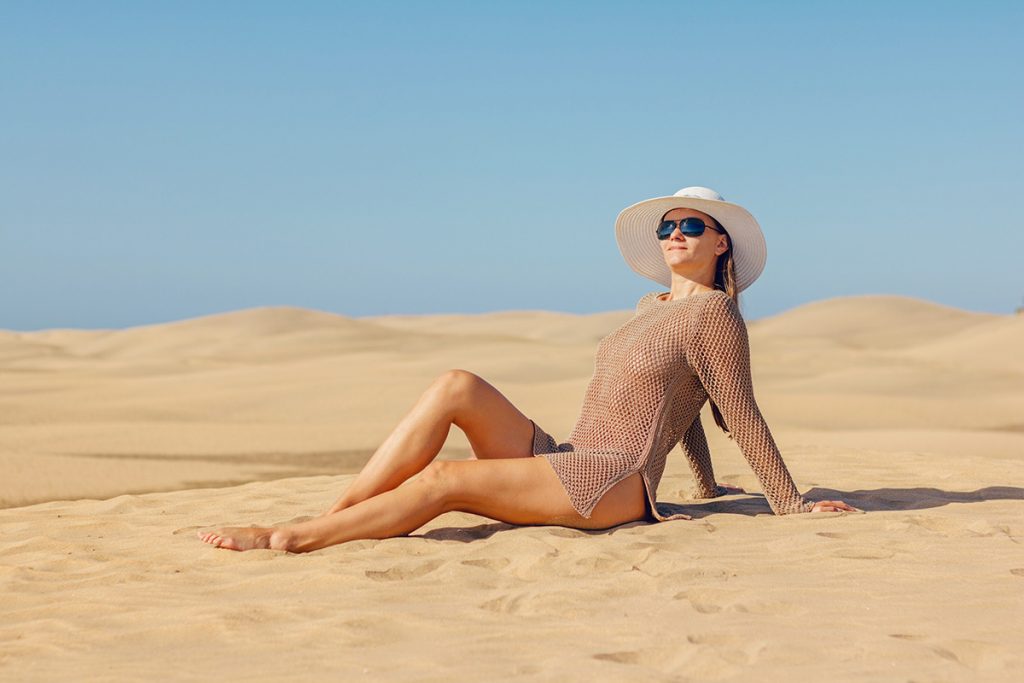For lots of people, having tanned skin means an active and jet setting lifestyle. It’s a luxurious thing to have because it means you get to soak in the sun no matter what season it is. Others think that it’s a healthier look than being white and pale. As a result, many take pains to darken their skin color through various means.
If you’re interested in giving the look a go, you might want to learn about the most important things about it before booking an appointment at Darque Tan or Sun Tan City. Understanding the risks and clearly knowing more about the misconceptions about tanning are essential so you can be sure that you won’t be compromising your wellbeing just to look more sun-kissed.
To help you get started in your quest to get a tan safely, here are some of clarifications about the most popular misconceptions on tanning:
“Tanning is safe as long as you don’t burn.”
According to Dr. Stephen Lynch, the Vice Chief of Staff and Primary Care/Intake Physician of the Cancer Treatment Centers of America, there’s no 100% safe way to get a tan without increasing your risks for skin cancer. To put things in perspective, however, all kinds of sun exposure puts you at risk of skin damage. There’s always a risk and tanning tends to increase that as it requires more exposure to UV rays.
Despite this, experts will not really tell you not to get some sunshine. As there are certain health benefits that you can only get from some sun exposure, you shouldn’t completely hide away from the sun. It should be controlled, however, to prevent significant skin damage.
“A base tan will help make things safer.”
Some believe that having a base tan will protect you against sunburn but studies don’t support this claim. So if you’ve heard somewhere that you should get a base tan from a salon to get a lot more of it by the beach, scientific evidence suggests otherwise.
The idea behind this misconception sounds convincing as it promises that a base tan preps your skin for more sun exposure later on. However, a base tan already means that you’ve already done some damage to your skin. It will not prevent further burning of your skin. It will also not prevent the long-term effects of tanning.
“Tanning beds are safer than going out in the sun.”
Based on the amount of UV rays used in tanning beds, they’re not really all that different from the sun in terms of tanning. They can equally cause skin burns and the prolonged exposure to the UV rays will put you at the same risk of developing skin cancer.
How can you get a relatively safe tan?
So what can you do if you want to darken your skin a little bit without seriously damaging it or increasing your risks of getting skin cancer? Take note of these tricks:
Wear sunscreen with SPF30 and use oils with naturally occurring SPF.
This may seem counterintuitive but a sunscreen will help prevent significant skin damage from sun exposure without completely blocking the UV rays from causing your skin to darken a little bit. It offers a good compromise so you can still get that sun-kissed look without damaging your skin.
Don’t overstay your skin’s ability to make melanin.
Melanin is the skin’s pigment that is responsible for tanning. It only works for 2-3 hours of exposure to UV rays. Going beyond that will not cause your skin to darken further but will only increase the skin damage you’ll make to your skin. So if you want to safely get a tan, you don’t have to stay all day long outside.
This also makes tanning salons easily preferable over going out to the sun. It’s going to be easier to stay for just an hour or two in a tanning bed than outdoors.
When getting a tan, change positions frequently.
This will help even out your skin’s exposure to the sun, preventing the burning of your skin in specific areas only.
Eat lycopene-rich foods.
To help protect your skin from harmful UV rays and boost its health, lycopene-rich foods can help. Studies show that it has components that can prevent UV penetration to the deeper layers of the skin which helps prevent sunburn and other more serious issues associated with UV rays.
Use tan-preserving products after sun bathing.
The use of aloe vera gel and tan-preserving lotions is also ideal if you want to tan safely. By extending the shelf-life of your tan, you will not need to go out for some prolonged sun exposure very often. This is generally safer as it will limit your UV ray exposure.
